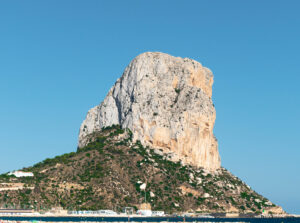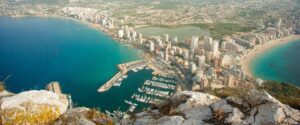Mediterranean warmth on the Costa Blanca

The Costa Blanca is another of the areas in Spain in which the sun hardly ever takes a holiday. The southern part of the Region of Valencia has a warm Mediterranean climate all year round. Palm, orange and almond trees grace its over 200 kilometres of fine sandy beaches and its calm waters.Popular tourist resorts such as Calpe, Benidorm and Torrevieja, offer a full range of services in an international atmosphere, whatever the time of year you choose to visit. You’ll find water sports and golf, with golf courses available in every location in the area. Never-ending beaches with fine sand, or secluded coves with turquoise waters nestling among cliffs. The coastline of Alicante is home to a number of unique places such as the Island of Tabarca and the Peñón de Ifach. A visit to either of them outside the summer months is an opportunity to enjoy them at their very best.
The daily average temperature ranges from about 12 °C (53.5 °F) in January and February to about 26 °C (79 °F) in July and August. Even in mid-winter, there are many sunny days, with daytime temperatures reaching or exceeding 20 °C (68 °F). In winter, very cold days are rare, but on colder periods, the minimum temperature can drop to about freezing; in practice, it never snows. The coldest records are around -2/-3 °C (27/28 °F). In summer, there’s sultry heat, though it’s generally bearable, also because of the sea breeze, however, there may be periods of intense heat, during which the temperature can reach as high as 38/40 °C (100/104 °F).
Rainfall in the Costa Blanca is scarce, since it is even lower than 300 millimeters (12 inches) per year, and follows the Mediterranean pattern, in fact, most of it occurs from September to March, while in summer, it almost never rains. Rainy days are particularly rare, but when it rains, it can rain a lot, and the rains can sometimes be intense and concentrated in time, causing floods. Owing to the scarcity of rainfall, the landscape is arid.

In Calpe, rainfall amounts to just 280 mm (11 in) per year. Here is the average rainfall.

The sea in the Costa Blanca is warm enough for swimming from July to September; in June, it’s still cool. Here, for example, are the temperature of the sea near Calpe.





